Solar Thermal Processing to Disinfect Human Waste
Abstract
1. Introduction
2. Materials and Methods
2.1. Concentrators
2.2. Turning Mirrors
2.3. Homogenizing Rod
2.4. Optical Fibers
2.5. Solar Receiver
3. Results and Discussion
3.1. Measured Flux Distribution and Tracking Performance
3.2. Power Measurements
3.3. Experimental Data from an On-Sun Experiment and a Simple Model
4. Conclusions and Path Forward
Supplementary Materials
Author Contributions
Funding
Data Availability Statement
Acknowledgments
Conflicts of Interest
References
- World Health Organization. Sanitation. 2020. Available online: https://washdata.org/sites/default/files/documents/reports/2019-07/jmp-2019-wash-households.pdf (accessed on 5 March 2021).
- World Health Organization. Progress on Household Drinking Water, Sanitation and Hygiene, 2000–2017. In Special Focues on Inequalities; United Nations Children Fund (UNICEF) and World Health Organization (WHO): New York, NY, USA, 2019; Available online: https://www.who.int/news-room/fact-sheets/detail/sanitation (accessed on 5 March 2021).
- Gupta, D.; Fischer, H.; Shrestha, S.; Ali, S.S.; Chhatre, A.; Devkota, K.; Fleischman, F.; Khatri, D.B.; Rana, P. Dark and bright spots in the shadow of the pandemic: Rural livelihoods, social vulnerability, and local governance in India and Nepal. World Dev. 2021, 141, 105370. [Google Scholar] [CrossRef]
- Liu, L.; Hu, J.; Hou, Y.; Tao, Z.; Chen, Z.; Chen, K. Pit latrines may be a potential risk in rural China and low-income countries when dealing with COVID-19. Sci. Total Environ. 2021, 761, 143283. [Google Scholar] [CrossRef] [PubMed]
- Mahmud, M.; Riley, E. Household response to an extreme shock: Evidence on the immediate impact of the Covid-19 lockdown on economic outcomes and well-being in rural Uganda. World Dev. 2021, 140, 105318. [Google Scholar] [CrossRef]
- Leich, H. Viewpoint. A challenge to the environment pro. Environ. Sci. Technol. 1971, 5, 11. [Google Scholar] [CrossRef]
- Fry, L.M.; Mihelcic, J.R.; Watkins, D.W. Water and Nonwater-related Challenges of Achieving Global Sanitation Coverage. Environ. Sci. Technol. 2008, 42, 4298–4304. [Google Scholar] [CrossRef]
- Langergraber, G.; Muellegger, E. Ecological Sanitation—A way to solve global sanitation problems? Environ. Int. 2005, 31, 433–444. [Google Scholar] [CrossRef]
- Blackett, I.C.H.P.; Heymans, C. The Missing Link in Sanitation Service Delivery: A Review of Fecal Sludge Management in 12 Cities (English); The World Bank: Washington, DC, USA, 2014; Available online: http://documents.worldbank.org/curated/en/395181468323975012/The-missing-link-in-sanitation-service-delivery-a-review-of-fecal-sludge-management-in-12-cities (accessed on 5 March 2021).
- Gambrill, M.; Gilsdorf, R.J.; Kotwal, N. Citywide Inclusive Sanitation—Business as Unusual: Shifting the Paradigm by Shifting Minds. Front. Environ. Sci. 2020, 7. [Google Scholar] [CrossRef]
- Cooney, C.M. Why is global sanitation so elusive? Environ. Sci. Technol. 2008, 42, 4240. [Google Scholar] [CrossRef][Green Version]
- Starkl, M.; Brunner, N.; Feil, M.; Hauser, A. Ensuring Sustainability of Non-Networked Sanitation Technologies: An Approach to Standardization. Environ. Sci. Technol. 2015, 49, 6411–6418. [Google Scholar] [CrossRef] [PubMed]
- Wald, C. The Economy in the Toilet. Nature 2017, 549, 146–148. [Google Scholar] [CrossRef]
- Brands, E. Prospects and challenges for sustainable sanitation in developed nations: A critical review. Environ. Rev. 2014, 22, 346–363. [Google Scholar] [CrossRef]
- Katukiza, A.; Ronteltap, M.; Niwagaba, C.; Foppen, J.; Kansiime, F.; Lens, P. Sustainable sanitation technology options for urban slums. Biotechnol. Adv. 2012, 30, 964–978. [Google Scholar] [CrossRef]
- Inyang, M.; Dickenson, E. The potential role of biochar in the removal of organic and microbial contaminants from potable and reuse water: A review. Chemosphere 2015, 134, 232–240. [Google Scholar] [CrossRef]
- Kearns, J.P.; Shimabuku, K.K.; Knappe, D.R.; Summers, R.S. High Temperature Co-pyrolysis Thermal Air Activation Enhances Biochar Adsorption of Herbicides from Surface Water. Environ. Eng. Sci. 2019, 36, 710–723. [Google Scholar] [CrossRef]
- Paz-Ferreiro, J.; Nieto, A.; Méndez, A.; Askeland, M.P.J.; Gascó, G. Biochar from Biosolids Pyrolysis: A Review. Int. J. Environ. Res. Public Health 2018, 15, 956. [Google Scholar] [CrossRef]
- Shimabuku, K.K.; Kearns, J.P.; Martinez, J.E.; Mahoney, R.B.; Moreno-Vasquez, L.; Summers, R.S. Biochar sorbents for sulfamethoxazole removal from surface water, stormwater, and wastewater effluent. Water Res. 2016, 96, 236–245. [Google Scholar] [CrossRef] [PubMed]
- Kesier, G. Optical Fiber Communications. In Encyclopedia of Telecommunications; John Wiley & Sons: Hoboken, NJ, USA, 2003. [Google Scholar]
- Kandilli, C.; Ulgen, K. Review and modelling the systems of transmission concentrated solar energy via optical fibres. Renew. Sustain. Energy Rev. 2009, 13, 67–84. [Google Scholar] [CrossRef]
- Kato, D.; Nakamura, T. Application of Optical Fibers to Transmission of Solar-Radiation. J. Appl. Phys. 1976, 47, 4528–4531. [Google Scholar] [CrossRef]
- Amara, S.; Nordell, B.; Benyoucef, B.; Benmoussat, A. Concentration Heating System with Optical Fiber Supply. In Impact of Integrated Clean Energy on the Future of the Mediterranean Environment, Proceedings of a Meeting Held 14–16 April 2011, Beirut, Lebanon; Salame, C., El Charif, H., El Hajj Hassan, F., El Tahchi, M., Eds.; Elsevier Procedia: Amsterdam, The Netherlands, 2011; pp. 805–814. [Google Scholar]
- Feuermann, D.; Gordon, J.M. Solar fiber-optic mini-dishes: A new approach to the efficient collection of sunlight. Sol. Energy 1999, 65, 159–170. [Google Scholar] [CrossRef]
- He, K.; Zheng, H.; Li, Z.; Tao, T.; Dai, J. Design and investigation of a novel concentrator used in solar fiber lamp. Sol. Energy 2009, 83, 2086–2091. [Google Scholar] [CrossRef]
- Kribus, A.; Zik, O.; Karni, J. Optical fibers and solar power generation. Sol. Energy 2000, 68, 405–416. [Google Scholar] [CrossRef]
- Peill, N.J.; Hoffmann, M.R. Solar-Powered Photocatalytic Fiber-Optic Cable Reactor for Waste Stream Remediation. J. Sol. Energy Eng. 1997, 119, 229–236. [Google Scholar] [CrossRef]
- Zik, O.; Karni, J.; Kribus, A. The TROF (tower reflector with optical fibers): A new degree of freedom for solar energy systems. Sol. Energy 1999, 67, 13–22. [Google Scholar] [CrossRef]
- Rahou, M.; Mojiri, A.; Rosengarten, G.; Andrews, J. Optical design of a Fresnel concentrating solar system for direct transmission of radiation through an optical fibre bundle. Sol. Energy 2016, 124, 15–25. [Google Scholar] [CrossRef]
- Jaramillo, O.A.; Del Río, J.A. Optical fibres for a mini-dish/Stirling system: Thermodynamic optimization. J. Phys. D Appl. Phys. 2002, 35, 1241–1250. [Google Scholar] [CrossRef]
- Maxey, L.C.; Parks, I.J.E.; Beshears, D.L.; Earl, D.D.; Lapsa, M.V.; Muhs, J.D. Spectral Transmission of a Solar Collector and Fiber Optic Distribution Hybrid Lighting System. In Proceedings of the ASME 2007 Energy Sustainability Conference, Long Beach, CA, USA, 27–30 June 2007; pp. 549–557. [Google Scholar]
- Schlegel, G.; Burkholder, F.; Klein, S.; Beckman, W.; Wood, B.; Muhs, J. Analysis of a full spectrum hybrid lighting system. Sol. Energy 2004, 76, 359–368. [Google Scholar] [CrossRef]
- Antón, I.; Silva, D.; Sala, G.; Bett, A.; Siefer, G.; Luque-Heredia, I.; Trebst, T. The PV-FIBRE concentrator: A system for indoor operation of 1000X MJ solar cells. Prog. Photovolt. Res. Appl. 2007, 15, 431–447. [Google Scholar] [CrossRef]
- Joo, H.; Jeong, H.; Jeon, M.; Moon, I. The use of plastic optical fibers in photocatalysis of trichloroethylene. Sol. Energy Mater. Sol. Cells 2003, 79, 93–101. [Google Scholar] [CrossRef]
- Marinangeli, R.E.; Ollis, D.F. Photo-assisted heterogeneous catalysis with optical fibers. Part III: Photoelectrodes. AIChE J. 1982, 28, 945–955. [Google Scholar] [CrossRef]
- Nakamura, T.; Smith, B.K. Solar Thermal System for Lunar ISRU Applications: Development and Field Operation at Mauna Kea, HI. In Nonimaging Optics: Efficient Design for Illumination and Solar Concentration Viii, Proceedings of a Meeting Held 21–22 August 2011, San Diego, CA, USA; Gordon, R., Ed.; At SPIE Optical Engineering + Applications Winston; SPIE-International Society for Optics and Photonics: Bellingham WA, USA, 2011. [Google Scholar]
- Nakamura, T.; Senior, C.L. Solar Thermal Power for Lunar Materials Processing. J. Aerosp. Eng. 2008, 21, 91–101. [Google Scholar] [CrossRef]
- Feuermann, D.; Gordon, J.M.; Huleihil, M. Light leakage in optical fibers: Experimental results, modeling and the consequences for solar concentrators. Sol. Energy 2002, 72, 195–204. [Google Scholar] [CrossRef]
- Wendelin, T.; Dobos, A.; Lewandowski, A. SolTrace: A Ray-Tracing Code for Complex Solar Optical Systems; NREL/TP-5500-59163; Office of Science and Technical Information: Oak Ridge, TN, USA, 2013. [Google Scholar]
- Liang, D.; Nunes, Y.; Monteiro, L.F.; Monteiro, M.L.F.; Collares-Pereira, M. 200-W solar energy delivery with optical fiber bundles. SPIE-Int. Soc. Opt. Eng. 1997, 3139, 217–224. [Google Scholar]
- Arnaoutakis, G.E.; Marques-Hueso, J.; Mallick, T.K.; Richards, B.S. Coupling of sunlight into optical fibres and spectral dependence for solar energy applications. Sol. Energy 2013, 93, 235–243. [Google Scholar] [CrossRef]
- Debongnie, J.; Phillips, S. Capacity of the human colon to absorb fluid. Gastroenterology 1978, 74, 698–703. [Google Scholar] [CrossRef]
- Ho, C.K.; Mahoney, A.R.; Ambrosini, A.; Bencomo, M.; Hall, A.C.; Lambert, T.N. Characterization of Pyromark 2500 Paint for High-Temperature Solar Receivers. J. Sol. Energy Eng. 2013, 136, 014502. [Google Scholar] [CrossRef]
- Yacob, T.W.; Fisher, R. (Chip); Linden, K.G.; Weimer, A.W. Pyrolysis of human feces: Gas yield analysis and kinetic modeling. Waste Manag. 2018, 79, 214–222. [Google Scholar] [CrossRef] [PubMed]
- Babu, B.V. Biomass pyrolysis: A state-of-the-art review. Biofuels Bioprod. Biorefining 2008, 2, 393–414. [Google Scholar] [CrossRef]
- Ward, B.J.; Yacob, T.W.; Montoya, L.D. Evaluation of solid fuel char briquettes from human waste. Environ. Sci. Technol. 2014, 48, 9852–9858. [Google Scholar] [CrossRef]
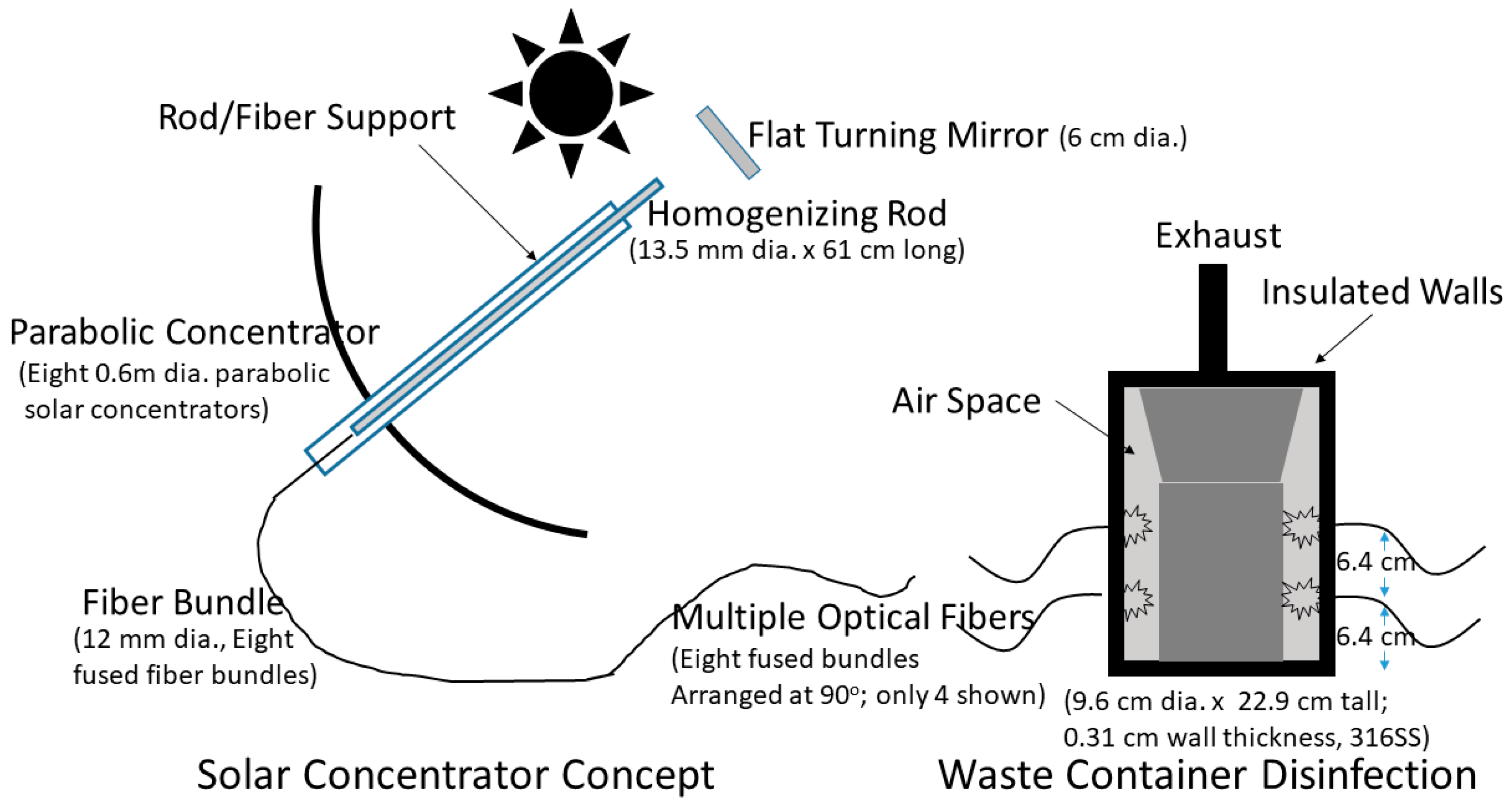
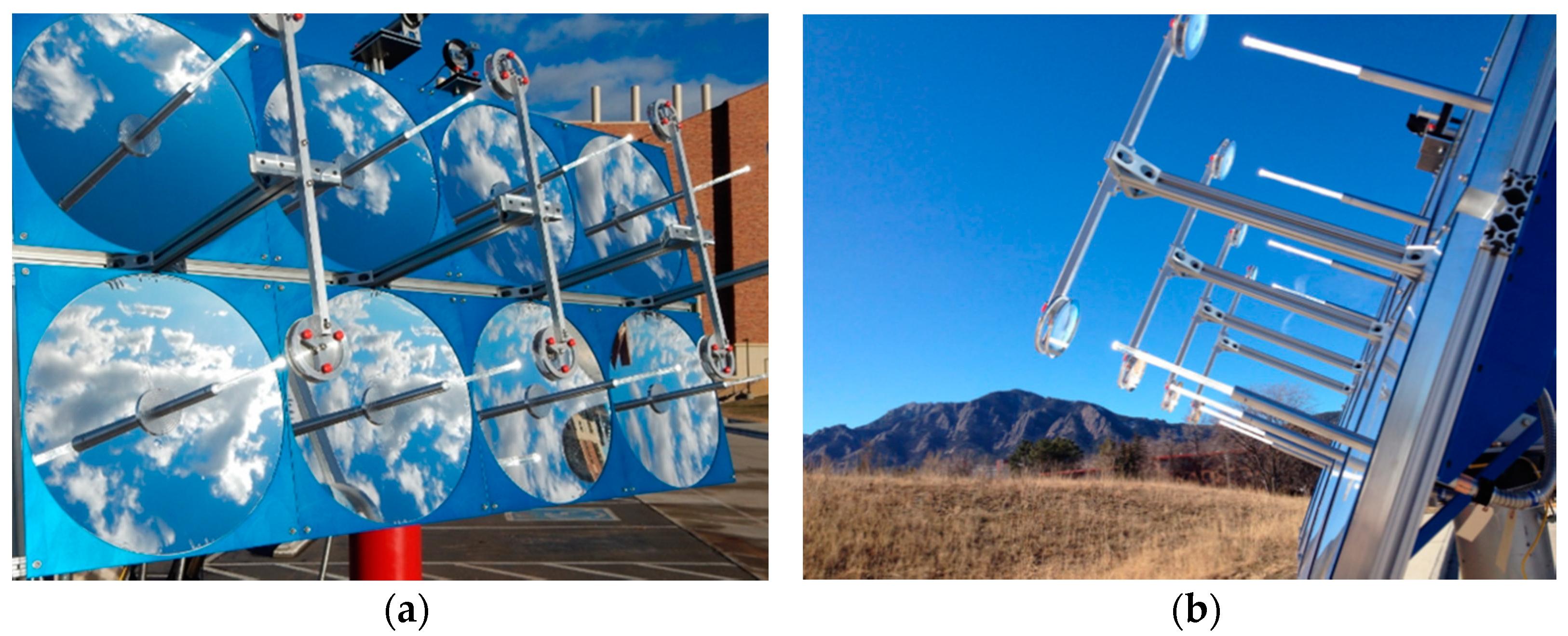
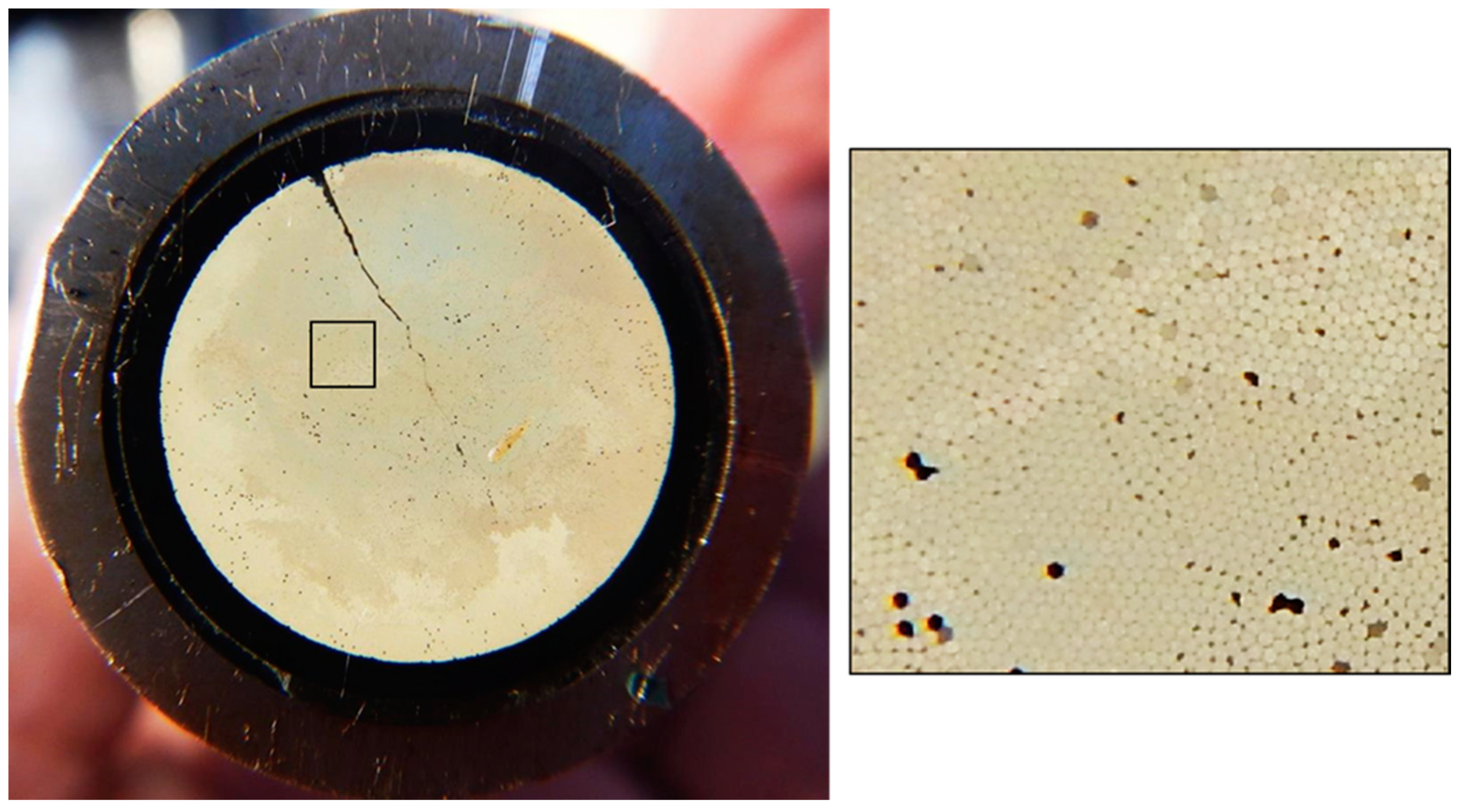


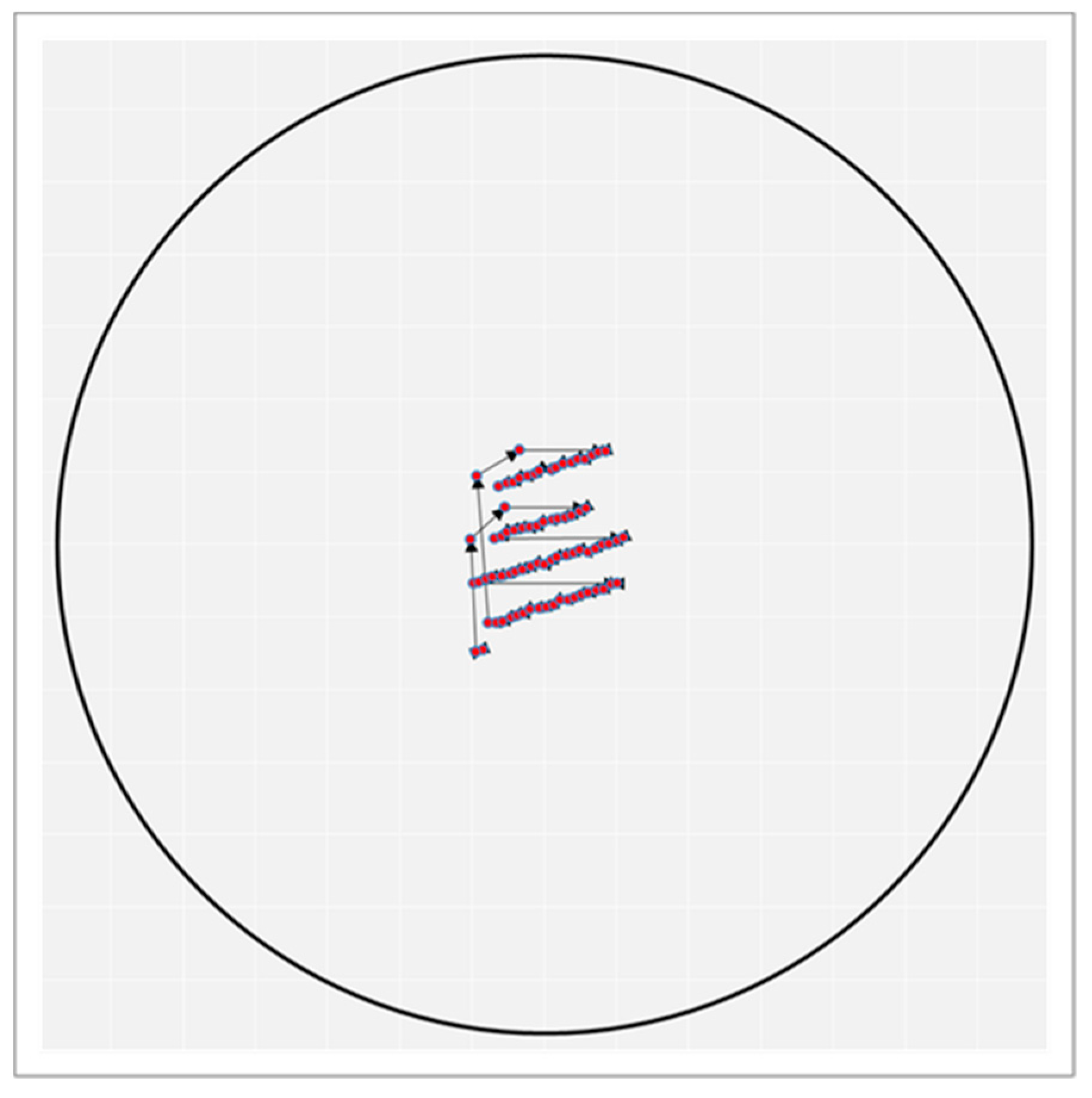
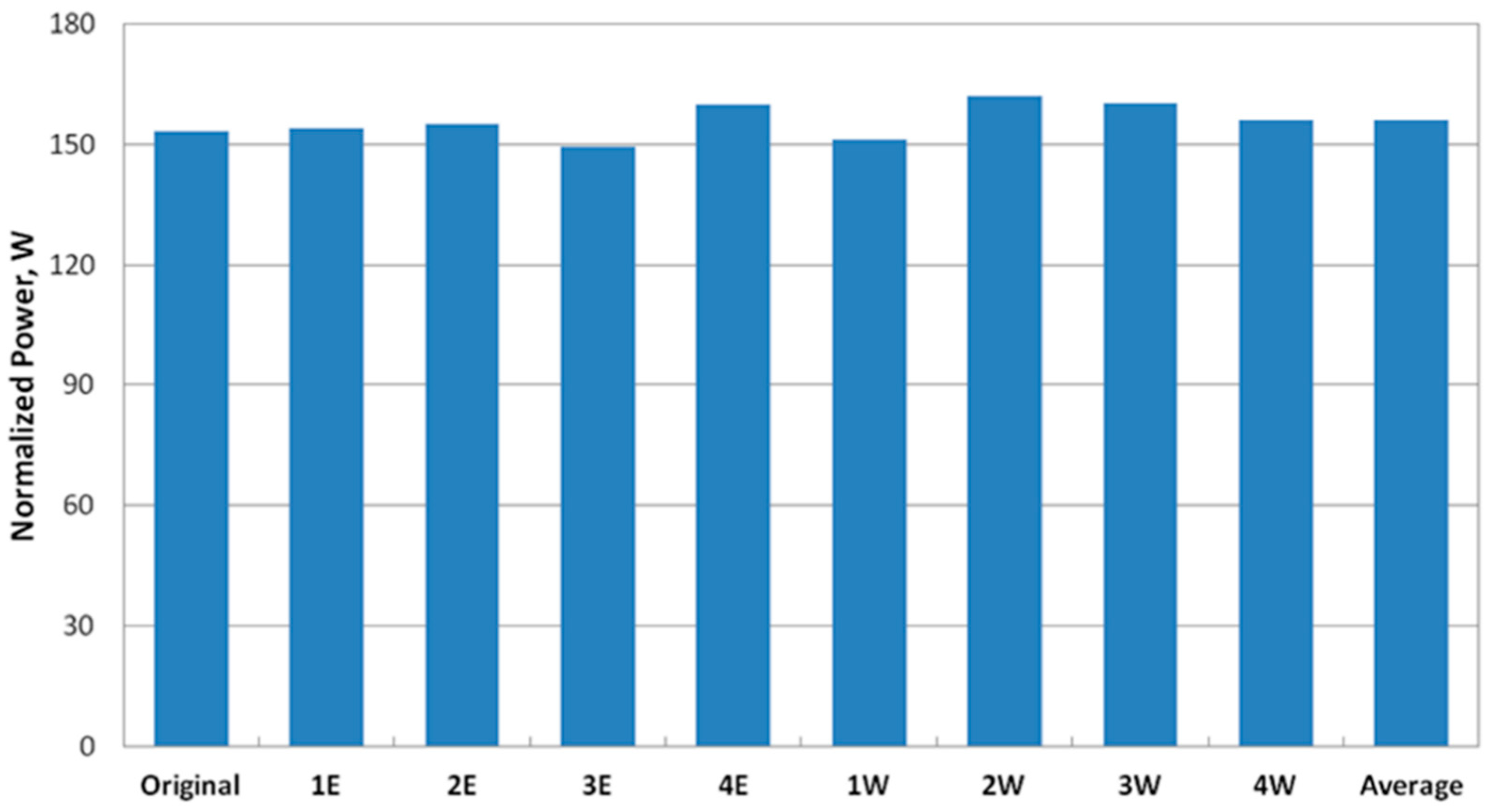
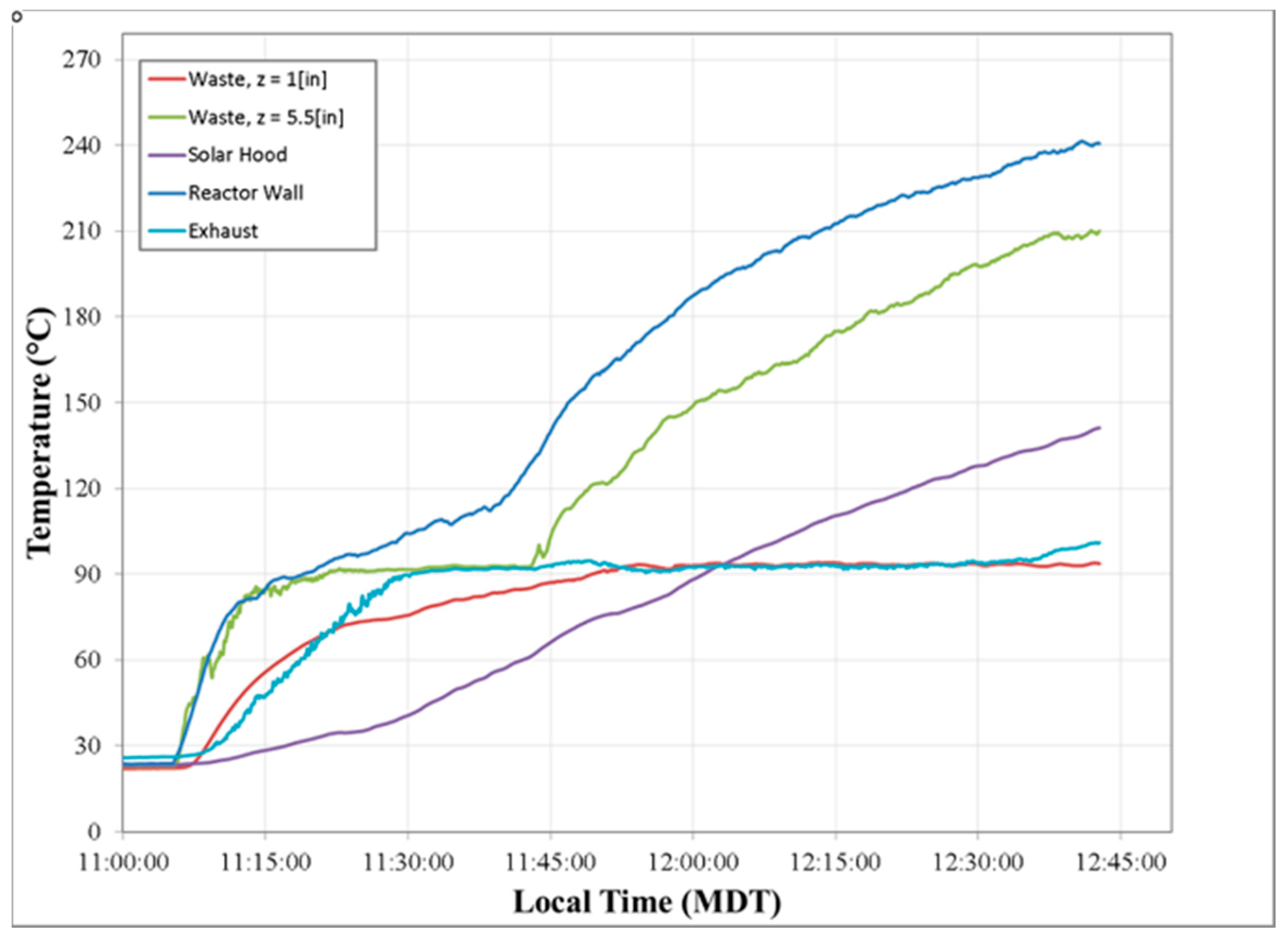

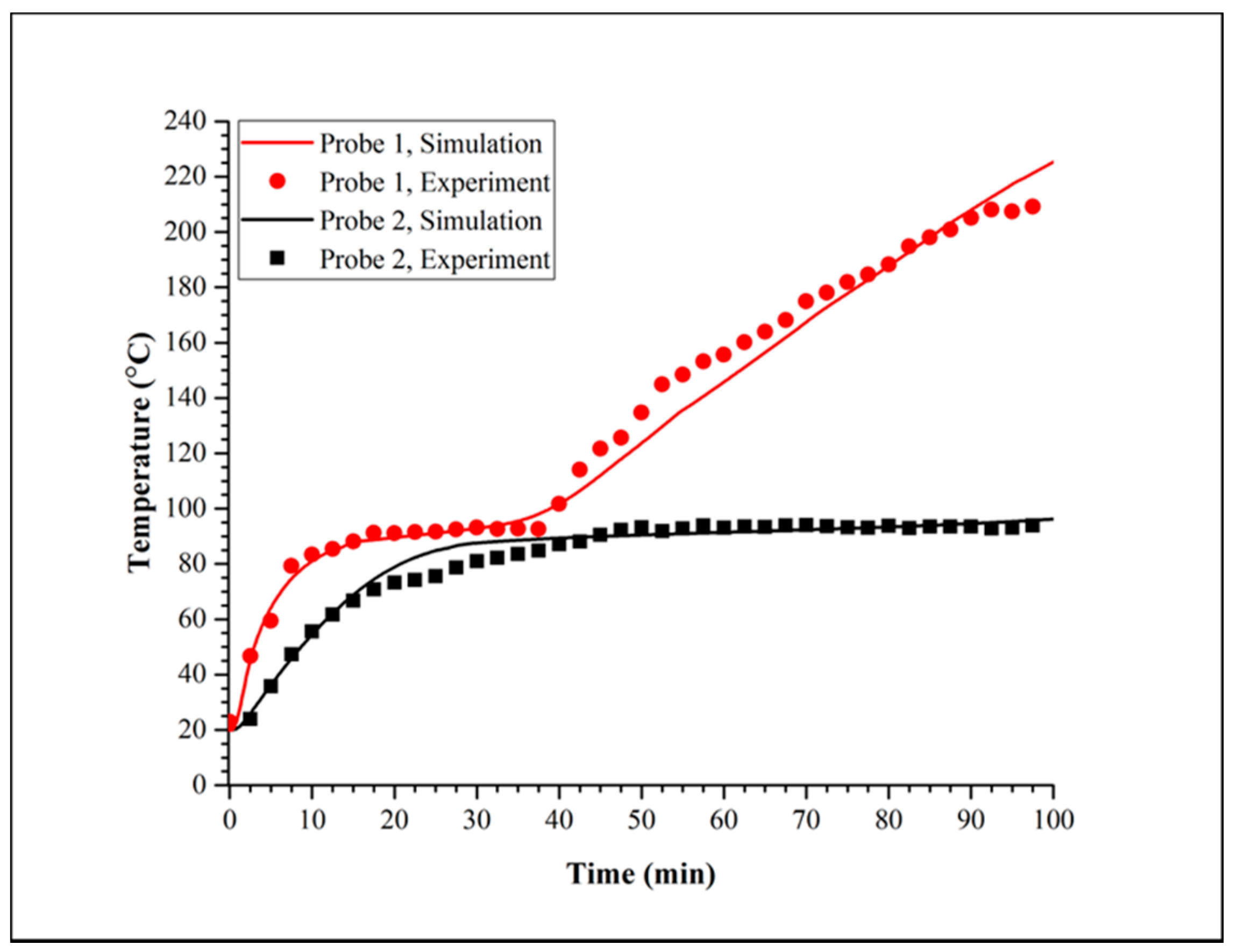
| Coefficient | Value | Description |
|---|---|---|
| 8.40 | Wet coefficient in the effective thermal conductivity of human feces | |
| 5.88 | Dry coefficient in the effective thermal conductivity of human feces |
Publisher’s Note: MDPI stays neutral with regard to jurisdictional claims in published maps and institutional affiliations. |
© 2021 by the authors. Licensee MDPI, Basel, Switzerland. This article is an open access article distributed under the terms and conditions of the Creative Commons Attribution (CC BY) license (https://creativecommons.org/licenses/by/4.0/).
Share and Cite
Fisher, R.P.; Lewandowski, A.; Yacob, T.W.; Ward, B.J.; Hafford, L.M.; Mahoney, R.B.; Oversby, C.J.; Mejic, D.; Hauschulz, D.H.; Summers, R.S.; et al. Solar Thermal Processing to Disinfect Human Waste. Sustainability 2021, 13, 4935. https://doi.org/10.3390/su13094935
Fisher RP, Lewandowski A, Yacob TW, Ward BJ, Hafford LM, Mahoney RB, Oversby CJ, Mejic D, Hauschulz DH, Summers RS, et al. Solar Thermal Processing to Disinfect Human Waste. Sustainability. 2021; 13(9):4935. https://doi.org/10.3390/su13094935
Chicago/Turabian StyleFisher, Richard P., Allan Lewandowski, Tesfayohanes W. Yacob, Barbara J. Ward, Lauren M. Hafford, Ryan B. Mahoney, Cori J. Oversby, Dragan Mejic, Dana H. Hauschulz, R. Scott Summers, and et al. 2021. "Solar Thermal Processing to Disinfect Human Waste" Sustainability 13, no. 9: 4935. https://doi.org/10.3390/su13094935
APA StyleFisher, R. P., Lewandowski, A., Yacob, T. W., Ward, B. J., Hafford, L. M., Mahoney, R. B., Oversby, C. J., Mejic, D., Hauschulz, D. H., Summers, R. S., Linden, K. G., & Weimer, A. W. (2021). Solar Thermal Processing to Disinfect Human Waste. Sustainability, 13(9), 4935. https://doi.org/10.3390/su13094935






